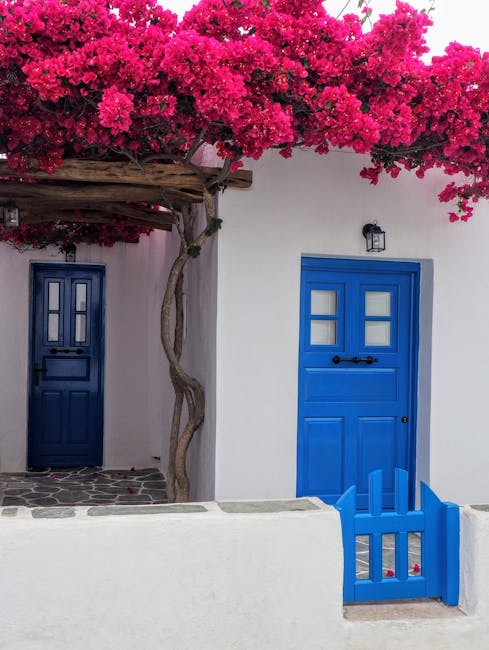Red, White, and Blue Backgrounds: A Comprehensive Guide to Design, Psychology, and Usage
The red, white, and blue color combination is instantly recognizable and deeply symbolic across the globe, particularly in North America and parts of Europe. But beyond its patriotic connotations, this powerful trio offers a versatile palette for designers, marketers, and artists. This comprehensive guide explores the nuances of using red, white, and blue backgrounds in various contexts, delving into its psychological impact, practical applications, and how to achieve the perfect visual balance.
Understanding the Psychology of Red, White, and Blue
Each color in this classic combination carries its own weight of psychological meaning. Red is associated with energy, passion, excitement, and urgency. It can stimulate appetite and attract attention, but overuse can also lead to feelings of aggression or anger. White represents purity, cleanliness, innocence, and peace. It offers a sense of spaciousness and can make other colors appear brighter. Blue conveys trust, stability, security, and calmness. It often evokes feelings of serenity and reliability, but in darker shades, it can signify sadness or depression.
The Combined Effect
When combined, red, white, and blue create a dynamic and complex effect. The balance between these colors dictates the overall message. A background heavy on red might feel intense and energetic, whereas a predominantly blue background projects a calm and trustworthy image. The white acts as a crucial balancing element, preventing the design from feeling overwhelming or too aggressive. It’s the space that allows the red and blue to breathe and interact harmoniously.

Applications of Red, White, and Blue Backgrounds
The versatility of this color scheme extends across numerous applications, from websites and marketing materials to graphic design and even interior decoration. Understanding the context is key to successfully utilizing this powerful combination.
Website Design
Red, white, and blue backgrounds are common in websites representing patriotic themes, government agencies, or businesses aiming to project a sense of trust and reliability. However, careful consideration is needed to avoid appearing overly cliché or jarring. Subtle gradients, textured backgrounds, and strategic placement of elements can elevate the design and avoid a simplistic look.

Marketing Materials
Brochures, flyers, and other marketing materials utilizing a red, white, and blue background can create a memorable impression, particularly for products or services related to national pride or heritage. However, ensuring brand consistency and avoiding overshadowing the main message is crucial. The background should complement, not compete with, the primary content.

Graphic Design
In graphic design, red, white, and blue can be employed to create impactful logos, illustrations, and even patterns. The possibilities are vast, ranging from subtle watermarks to bold statement pieces. The key lies in understanding the color proportions and their symbolic significance within the broader design concept.
Interior Decoration
Red, white, and blue can also enhance interior spaces, creating a patriotic or nautical feel. Subtle touches like accent pillows, wall art, or even paint schemes can subtly incorporate this classic combination without overwhelming the room. Balancing the intensity of the colors with neutral tones is essential for a cohesive and inviting ambiance.
Creating Effective Red, White, and Blue Backgrounds
Designing effective backgrounds requires careful consideration of various factors, including color shades, patterns, and textures. Here are some tips to create compelling visuals:
- Choose the Right Shades: Avoid overly saturated or bright colors. Opt for softer, more muted tones to create a balanced and aesthetically pleasing background.
- Consider Texture and Patterns: Incorporating subtle textures or patterns can add depth and visual interest to the background, preventing it from appearing flat and monotonous.
- Balance the Color Ratio: Experiment with different color proportions to achieve the desired mood and visual impact. A good balance usually involves using white as a dominant color, followed by blue, and then red as an accent.
- Ensure Readability: The background should not clash with the foreground elements. Choose colors and fonts that provide optimal contrast and legibility.
- Test on Different Devices: Ensure your design looks great on various devices and screen sizes. Color perception can vary across different displays.
Beyond the Traditional: Exploring Variations
While the classic red, white, and blue combination is instantly recognizable, there are countless variations to explore. Experimenting with different shades, incorporating gradients, or adding other complementary colors can create unique and visually stunning effects. Consider incorporating navy blue for a more sophisticated feel, or using a pastel palette for a gentler, more modern aesthetic.
Modern Interpretations
Many modern designers are reimagining the red, white, and blue color scheme, incorporating abstract designs, geometric patterns, and minimalist approaches. This allows for a fresh take on a classic combination, appealing to a broader audience.
Cultural Considerations
It’s crucial to understand the cultural context of red, white, and blue. While it symbolizes patriotism in some countries, it might hold different meanings elsewhere. Always consider your target audience and the potential connotations before using this color scheme in your designs.
Conclusion: Harnessing the Power of Red, White, and Blue
The red, white, and blue color combination offers a versatile and powerful tool for designers and marketers. By understanding the psychology of each color and carefully considering the context of its application, you can create impactful and memorable visuals that resonate with your audience. Remember to experiment, adapt, and find the perfect balance to harness the full potential of this classic and timeless color palette.

